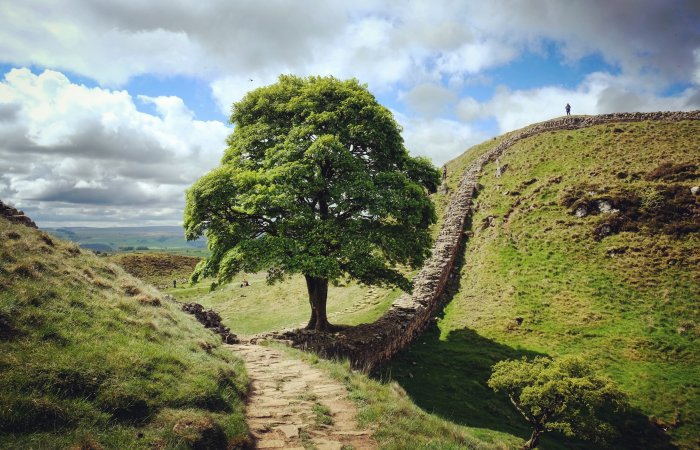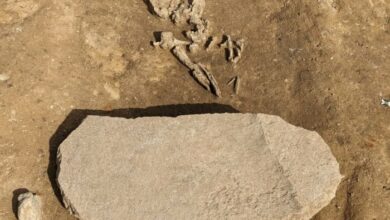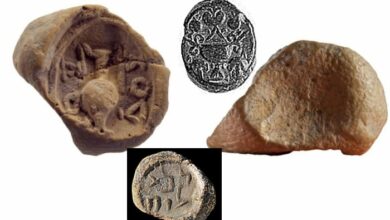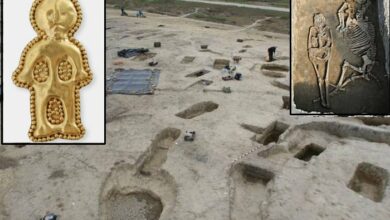Legacy Of The Iconic Sycamore Gap Tree – Historical Landmark At Hadrian’s Wall

Jan Bartek – AncientPages.com – When news about the deliberate destruction of the iconic Sycamore Gap Tree, an unmistakable landmark at Hadrian’s Wall and Housesteads Fort, reached the world, people were shocked, angry, and sad.
The beautiful Sycamore Gap tree became a victim of vandalism. Credit: Adobe Stock – Alexandra
According to the National Trust, the Sycamore Gap tree, also known as the Robin Hood tree, located near Crag Lough in Northumberland, England, was planted by John Clayton (1792–1890), a lawyer from Newcastle who owned the land back in the late 19th century. Coming from a wealthy family and having inherited the Roman fort of Chesters, Clayton had a deep fascination for Hadrian’s Wall.
He dedicated nearly half a century to its excavation and preservation. His concern grew as he saw people damaging it by removing dressed stones for their construction projects. By his death, he had acquired five forts and approximately 20 miles of Hadrian’s Wall under his ownership – all in an effort to safeguard these historical sites.
The land and the Sycamore Gap tree came into the care of the National Trust in the 1940s.
The tree gained fame after its appearance in the 1991 film Robin Hood: Prince of Thieves. The Woodland Trust recognized it as the English Tree of the Year in 2016. The location was a favorite spot for astrophotographers and stargazers alike. Remarkably, on May 30, 2003, it remained unscathed despite a helicopter crash occurring just about 30 meters away during the filming of British Isles—A Natural History. The four individuals aboard the helicopter were fortunate to escape with only minor injuries.
In a shocking incident on the morning of September 28, 2023, the iconic Sycamore Gap tree was deliberately cut down. Northumbria Police labeled this act as deliberate vandalism. The tree seemed to have been chopped off at its base with a chainsaw, marked by a white line just below the cut.
The cleanness and sharpness of the cut led authorities and park rangers to believe that this was not an amateur job. Following investigations, Northumbria Police apprehended a teenager and an elderly man in relation to this incident, later arresting two more men in their thirties. However, the police confirmed that no further action would be taken against the teenager and the older man while both men in their thirties were still out on bail.
Hadrian’s Wall in the Northumberland National Park. Credit: Adobe Stock – drhfoto
The National Trust is working to create a lasting legacy for the Sycamore Gap tree.
The Sycamore Gap tree was carefully moved from Hadrian’s Wall and stored safely.
The National Trusts has retained the tree in large sections, which means they can keep all options open for the future.
The tree’s relocation has contributed to the preservation of Hadrian’s Wall, a monument with a rich history spanning 1,900 years. This action has also enhanced the site’s safety, making it once again accessible to visitors.
In addition, a temporary fence to protect the tree’s stump has been set up.
The National Trust reports that experts at the Plant Conservation Centre are currently nurturing seeds and cuttings from the tree that was recently cut down. Despite initial worries about the tree being in its growth phase when it fell, they are happy to report that these samples are showing encouraging progress.
A seedling from the Sycamore Gap tree growing at the Plant Conservation Centre. Credit: National Trust Images/James Dobson
Dozens of seeds have sprouted after being planted in specially tested peat-free compost. The team has also been employing various propagation techniques to produce genetically identical copies of the original tree. One such method is ‘budding’, where a bud from the original tree is grafted onto a rootstock of the same species. Additionally, they have used two types of grafting – ‘whip and tongue’ and ‘apical wedge’. These involve joining a scion (a cutting from the tree) with a rootstock using matching cuts in both materials,” as stated by National Trust in their press release.
“These techniques, delivered with a remarkable degree of care and precision by our conservationists, are providing a legacy for this much-loved tree. And while there’s a way to go before we have true saplings, we’ll be keeping everything crossed that these plants continue to grow stronger and can be planted out and enjoyed by many in the future,” Andrew Jasper, Director of Gardens and Parklands, said in a press statement.
Written by Jan Bartek – AncientPages.com Staff Writer
Copyright © AncientPages.com All rights reserved. This material may not be published, broadcast, rewritten or redistributed in whole or part without the express written permission of AncientPages.com







